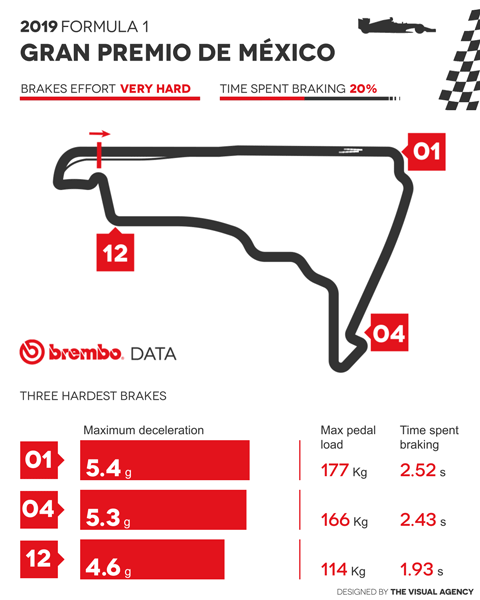Brembo has three production plants in Mexico: Puebla, Apodaca and Escobedo.
Inaugurated in 2016, the plant in Escobedo extends across more than 35.000 square meters feet and can produce 2 million aluminum calipers every year.
Although the circuit is located 2,229 meters (7,313 feet) above sea level, the altitude doesn't cause any problems for the braking system.
What does put the system to the test are the velocity spikes: last year Kimi Raikkonen’s Ferrari car reached 362 km/h (225 mph).
Besides speed, the temperature of the tarmac can have a big influence on the temperature of the discs and calipers.
During qualifying of two years ago, these got up to 44°C (111°F). Also, the increase in grip on the tarmac during the race weekend typically leads to a rise in the amount of braking torque discharged to the ground.
According to Brembo technicians, who have ranked the 21 World Champion circuits, the Autódromo Hermanos Rodríguez is very demanding on the brakes. On a scale of 1 to 5, it earned a 5 on the difficulty index.

